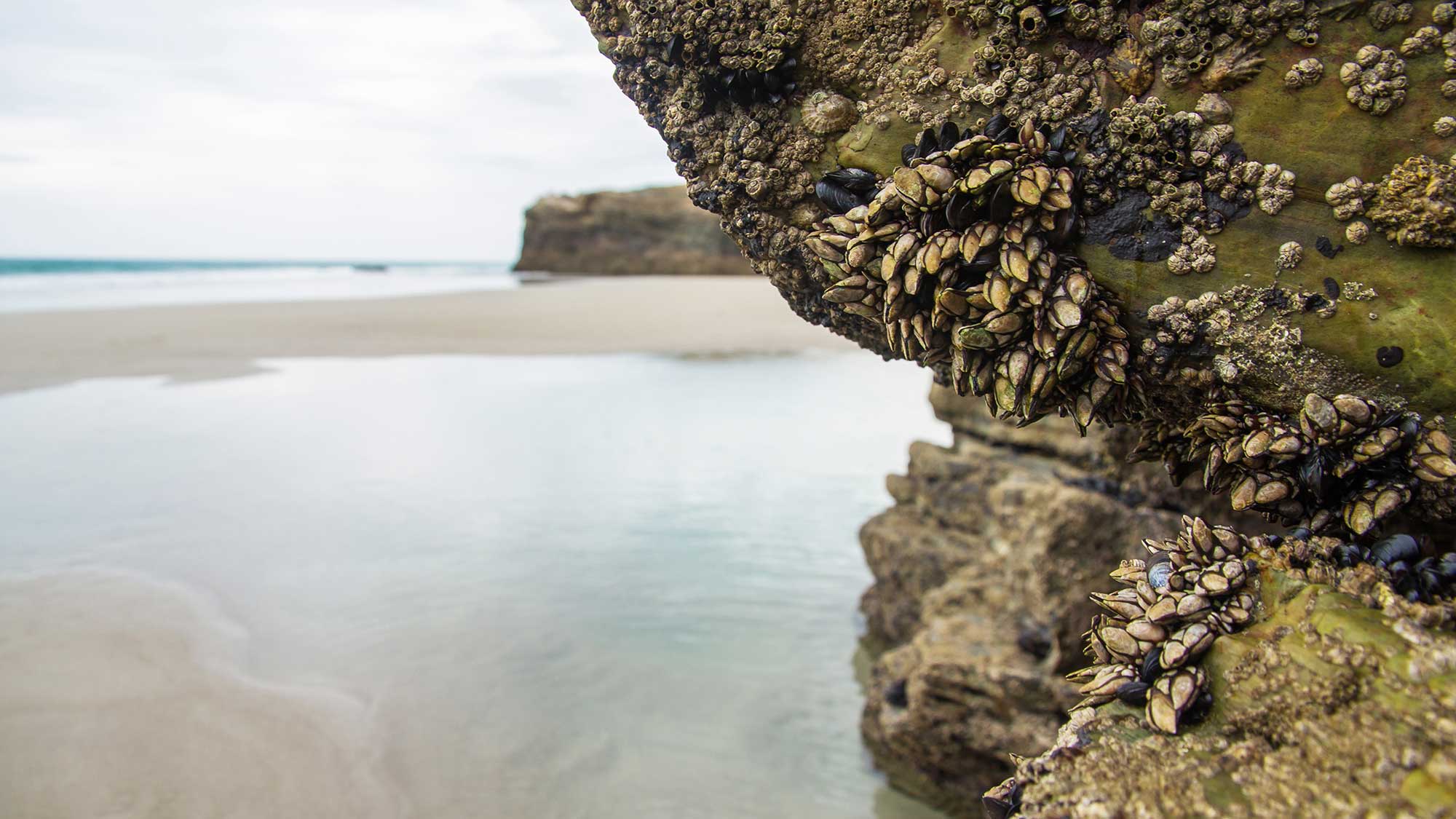

This article was originally featured on Hakai Magazine, an online publication about science and society in coastal ecosystems. Read more stories like this at hakaimagazine.com.
As the world warms, animals living near the coast are being battered by stronger storms, rising seas, and extreme temperatures. While fish, birds, and other species might be able to escape—often toward the poles—many marine creatures can barely move, let alone speed out of the way.
Scientists have long known that on hot days more mobile shoreline creatures like crabs take steps to control their body temperature by scuttling into cool crevices. Less mobile animals such as barnacles and limpets, meanwhile, just have to cope as best they can. Yet with extreme heatwaves becoming more common, Lily McIntire, an ecologist at San Diego State University in California, was curious to know where intertidal creatures spend hot days and what happens to their internal temperatures.
For the past few years, McIntire has been making epoxy resin models of various intertidal animals—from fast-moving crabs to slower snails and limpets to immobile animals like barnacles—and dotting them around the shoreline in Northern California. Affixed with temperature loggers, the resin replicas are designed to heat up and cool down at the same rate as the real creatures. By then watching where real animals spend their time, and using nearby models to determine their internal body temperatures, McIntire got a glimpse into how the beach’s tiny inhabitants handle the heat.
The preliminary data, which was presented at a recent conference, shows that on hot days the faster creatures manage to keep their body temperatures stable by hiding out in cooler areas, while less mobile animals bake in the sun. On cool, cloudy days, McIntire’s experiments show that slow creatures in the intertidal zone sit at around 15 °C. But in hot, sunny weather, she found they can heat up to around 30 °C.
McIntire says it’s not entirely clear how animals deal with extremely hot days, like those during the heat dome that afflicted the Pacific Northwest in 2021 with temperatures above 40 °C, as none occurred during her experiments.
However, she says in extreme heat it is possible that faster-moving animals like crabs will fare worse than sessile ones. The reason, she explains, is that while mobile creatures can head for a shady spot, sessile species have likely evolved better physiological ways to deal with temperature extremes. For instance, many snails and mussels have heat shock proteins that help them cope with heat stress by protecting other important proteins. But these adaptations to high temperatures have limits, McIntire says.
Michael Burrows, a marine ecologist at the Scottish Association for Marine Science who was not involved in McIntire’s project, expects that with ongoing warming mobile shoreline creatures will not be able to spend as much time hunting and foraging, while slower creatures like barnacles will disappear from warmer parts of the seashore. The overall result, he says, could be akin to cutting off the lower links of the food chain.